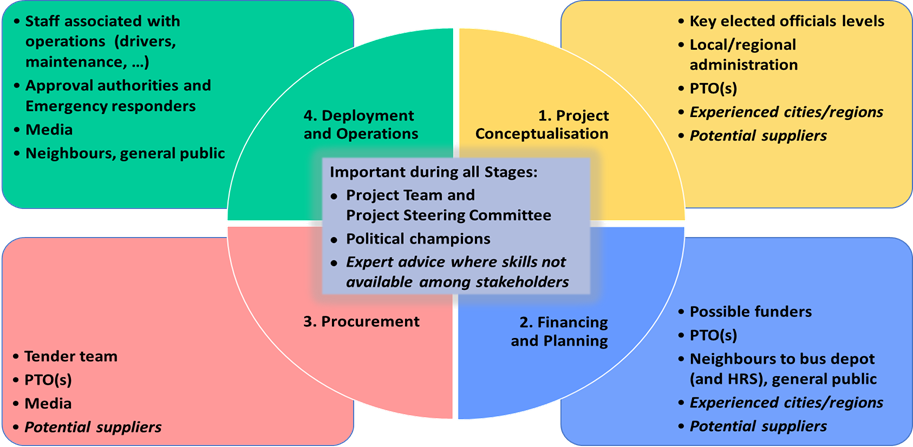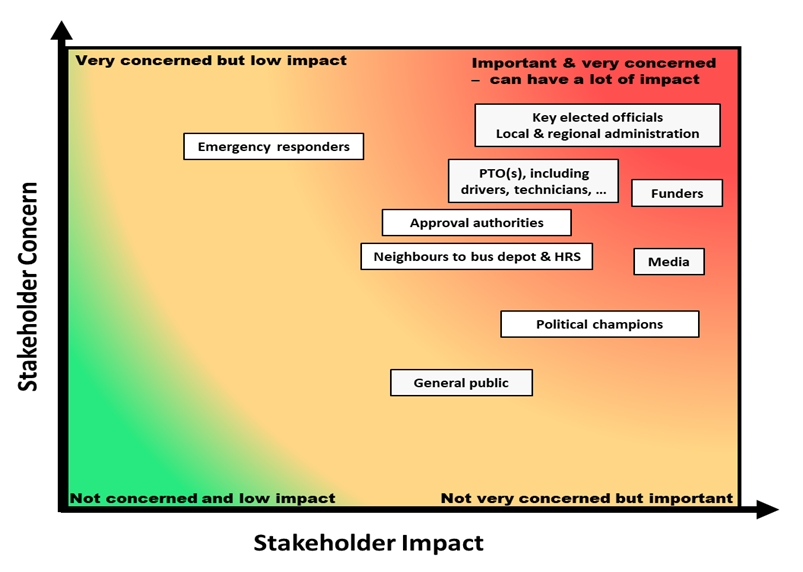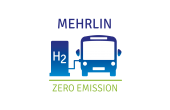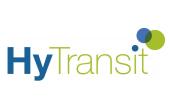
There is a wide range of stakeholders who can provide important and powerful support to your fuel cell bus project, or just as powerful opposition.
On the support side, as an example, an influential and involved Steering Group can provide very important ‘political’ support. It might consist of senior representatives from the local administration and the PTA/PTO, as well as respected political leaders (political ‘champions’), to maintain support and obtain advice. It may also extend to technology and/or renewable energy suppliers.
On the opposition side, this may be very local, such as neighbours to the proposed refuelling site, or quite distant, such as national or international environmental organisations.
Identification
The relevant stakeholders need to be identified, their field of impact mapped, and a Communication Plan for engaging with them established and implemented. Note that not all stakeholders will have the same kind or level of potential impact or be relevant to every stage of your project
The figure below provides a sample Stakeholder Map that distinguishes between project Stages. In addition to stakeholders, it includes other parties of key relevance, for example, cities/sites with existing experiences in FCB demonstration, and potential suppliers of HRSs and FCBs.

Sample Map of important Stakeholders and (in italics) further parties of key relevance during the Stages of an FCB deployment project.
Prioritisation
The task of working with the different stakeholders needs to be prioritised. For instance, when and how to engage with the media must be carefully thought out and how you communicate with influential decision makers must be appropriate.
The prioritisation can be done by mapping the stakeholders on a matrix concerning the level of their concern and level of impact/importance to project progress, as exemplified in the Figure below.

Example of a Community Stakeholder Prioritisation Map. [Ref: Chart based on “People, Transport and Hydrogen Fuel, Guidelines for Local Community Engagement when Implementing Hydrogen Powered Transport” (see Table 1 3 above). HyFLEET: CUTE, 2009.]
It is important to be aware that the criticality of the individual stakeholder groups varies from site to site, so this is just a sample map for illustration. Note also that individual players can have different roles (and, therefore, different criticalities) at different times during a project. In particular, the fire services are part of the Emergency Response but usually also have a say when it comes to permitting of the HRS and the FCB maintenance workshop.
On-going Stakeholder Engagement
While this attention to stakeholder engagement appears self-evident, it is often overlooked under the pressure of other more immediate tasks. One essential element of this activity is the requirement to keep in contact with the stakeholder through active, customised engagement. Passive communication such as Newsletters, Press Releases and Social Media updates are useful communication channels but cannot replace face-to-face discussions with key stakeholders. Personal communication of project status and listening to concerns and issues are very important in heading off possible obstacles, and potentially re-shaping project elements to address questions that have been raised.
Planning to maximise the leverage that can be gained once your FCBs are operating is also important. Experience has shown that some of the best ambassadors for the new technology are bus drivers who thoroughly enjoy the opportunity to be part of an innovative programme. They are also the people who have the most contact with the general community. This is an important insight for ongoing broad dissemination and communication.






